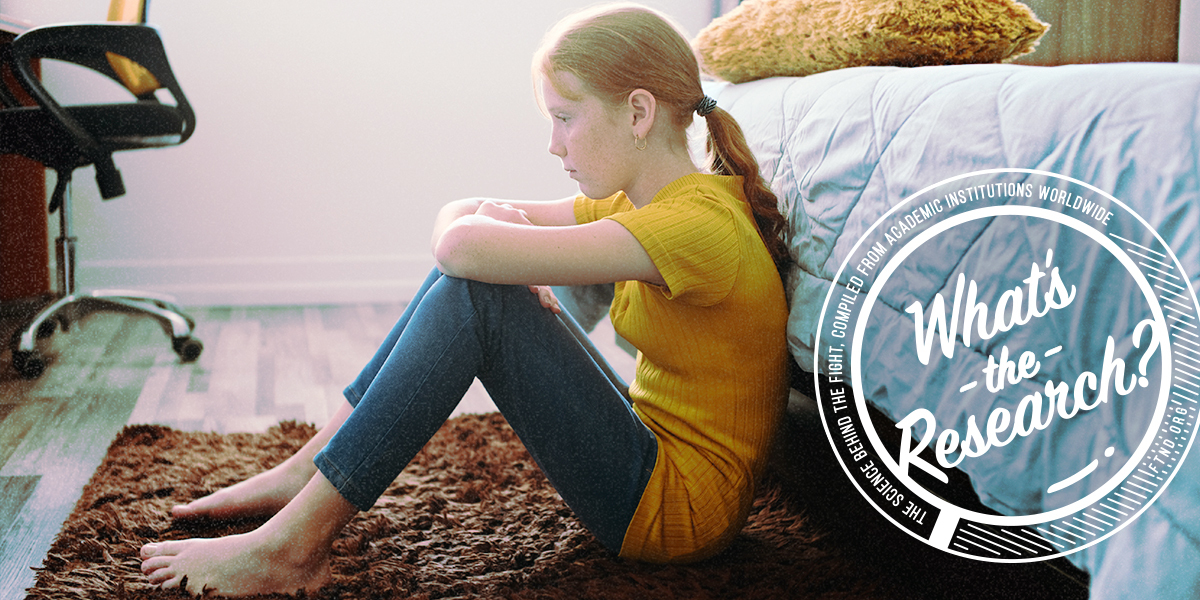Decades of studies from respected academic institutions, have demonstrated significant impacts of porn consumption for individuals, relationships, and society. "What’s the Research" aims to shed light on the expanding field of academic resources that showcase porn’s harms in a variety of ways. Below are selected excerpts from published studies on this issue.
The full study can be accessed here.
Thorn Research: Understanding sexually explicit images, self-produced by children
Authors: Thorn in partnership with Benenson Strategy Group
Published: August 2021
Background
Self-generated child sexual abuse material (SG-CSAM) is a rapidly growing area of child sexual abuse material (CSAM) in circulation online and being consumed by communities of abusers.
Importantly, SG-CSAM—explicit imagery of a child that appears to have been taken by the child in the image—presents unique investigative challenges for law enforcement and a distinct threat to its victims.
Methods
The resulting research focused on kids aged 9 – 17 and caregivers of children in those same age groups. Both qualitative and quantitative tools were used.
Results
This study has focused largely on the dynamics and potential harms of sexting.
Three important themes have emerged:
- Producing, sharing, and re-sharing is increasingly common, with many kids viewing “sharing nudes” or “sexting” as normal among peers.
- Experiences vary depending on the presence of consent and coercion, and the harm of initially consensual experiences can escalate rapidly when images are non consensually re-shared beyond the intended recipient.
- Reactions to kids seeking help with this issue often range from inaction to blame; this is compounding the harm of negative online experiences and further isolating kids in trouble.
According to survey participants, nearly 1 in 5 teenage girls aged 13–17 and 1 in 10 teenage boys that same age report that they have shared their own nudes (overall, 11% of kids aged 9-17 report having shared their own nudes)…
Few kids say they have personally re-shared SG-CSAM, though many more admit to having been exposed to non-consensually re-shared SG-CSAM.
Only 9% of kids aged 9–17 say they have re-shared SG-CSAM, while 21% say they have seen it.
The full study can be accessed here.
Your Support Matters Now More Than Ever
Most kids today are exposed to porn by the age of 12. By the time they’re teenagers, 75% of boys and 70% of girls have already viewed itRobb, M.B., & Mann, S. (2023). Teens and pornography. San Francisco, CA: Common Sense.Copy —often before they’ve had a single healthy conversation about it.
Even more concerning: over half of boys and nearly 40% of girls believe porn is a realistic depiction of sexMartellozzo, E., Monaghan, A., Adler, J. R., Davidson, J., Leyva, R., & Horvath, M. A. H. (2016). “I wasn’t sure it was normal to watch it”: A quantitative and qualitative examination of the impact of online pornography on the values, attitudes, beliefs and behaviours of children and young people. Middlesex University, NSPCC, & Office of the Children’s Commissioner.Copy . And among teens who have seen porn, more than 79% of teens use it to learn how to have sexRobb, M.B., & Mann, S. (2023). Teens and pornography. San Francisco, CA: Common Sense.Copy . That means millions of young people are getting sex ed from violent, degrading content, which becomes their baseline understanding of intimacy. Out of the most popular porn, 33%-88% of videos contain physical aggression and nonconsensual violence-related themesFritz, N., Malic, V., Paul, B., & Zhou, Y. (2020). A descriptive analysis of the types, targets, and relative frequency of aggression in mainstream pornography. Archives of Sexual Behavior, 49(8), 3041-3053. doi:10.1007/s10508-020-01773-0Copy Bridges et al., 2010, “Aggression and Sexual Behavior in Best-Selling Pornography Videos: A Content Analysis,” Violence Against Women.Copy .
From increasing rates of loneliness, depression, and self-doubt, to distorted views of sex, reduced relationship satisfaction, and riskier sexual behavior among teens, porn is impacting individuals, relationships, and society worldwideFight the New Drug. (2024, May). Get the Facts (Series of web articles). Fight the New Drug.Copy .
This is why Fight the New Drug exists—but we can’t do it without you.
Your donation directly fuels the creation of new educational resources, including our awareness-raising videos, podcasts, research-driven articles, engaging school presentations, and digital tools that reach youth where they are: online and in school. It equips individuals, parents, educators, and youth with trustworthy resources to start the conversation.
Will you join us? We’re grateful for whatever you can give—but a recurring donation makes the biggest difference. Every dollar directly supports our vital work, and every individual we reach decreases sexual exploitation. Let’s fight for real love:


